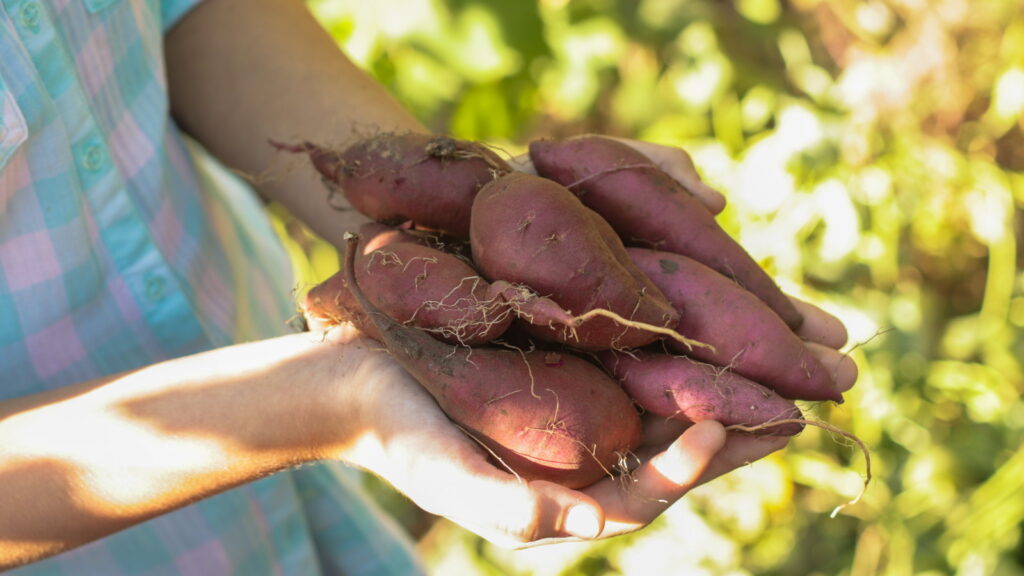
Companion planting, an age-old agricultural practice, offers a natural way to protect sweet potato crops from pests while enhancing growth. By strategically selecting companion plants, gardeners can bolster their harvests and improve plant health. This article explores the best and worst companion plants for sweet potatoes, providing insights into effective gardening strategies.
Sweet potatoes, a staple in many gardens, benefit significantly from the protective and nurturing qualities of certain companion plants. These allies not only ward off pests but also contribute to a more bountiful harvest. However, some plants can hinder sweet potato growth, making it crucial to choose wisely.
The Best Companion Plants for Sweet Potatoes
Companion planting with sweet potatoes can repel pests, attract beneficial insects, and even provide essential nutrients. Here are some top choices for companion plants that can enhance your sweet potato garden:
Nasturtiums: A Natural Pest Repellent
Nasturtiums are a vibrant addition to any garden, offering both aesthetic appeal and practical benefits. These plants are renowned for their pest-repelling properties, particularly against the Colorado potato beetle. The strong aroma of nasturtiums confuses these pests, keeping them away from sweet potatoes.
“Nasturtiums are excellent trap plants, attracting aphids, flies, and flea beetles away from more precious crops.”
Moreover, nasturtiums draw beneficial insects that prey on common garden pests, making them a valuable ally in any vegetable garden.
Summer Savory: A Herb with a Purpose
Summer savory, an aromatic herb, excels at deterring the sweet potato weevil. Its scent confuses these pests, preventing them from locating and damaging the crop. Additionally, summer savory attracts beneficial insects and can be substituted with thyme, dill, or oregano for similar effects.
Yarrow: Surprising but Effective
Though typically found in flower beds, yarrow is a surprisingly effective companion for sweet potatoes. Its bright blooms attract beneficial insects like ladybugs and predatory wasps, which help control aphid populations and other pests.
“Yarrow not only enhances the beauty of your garden but also serves as a natural pest control agent.”
Alliums: The Power of Aroma
Garlic, onions, and other alliums are potent pest deterrents due to their strong sulfur aroma. These plants repel aphids, mites, and the sweet potato weevil, while also discouraging larger pests like rabbits and deer.
Legumes: Nature’s Nitrogen Fixers
Legumes, such as peas and beans, are excellent companions for sweet potatoes due to their ability to fix nitrogen in the soil. This process replenishes soil nutrients, supporting the heavy-feeding sweet potato plants.
“Growing legumes alongside sweet potatoes can significantly enhance soil fertility, leading to healthier crops.”
Alyssum: Small but Mighty
Sweet alyssum, with its delicate blooms, attracts beneficial insects that prey on pests threatening sweet potatoes. However, gardeners should be cautious, as alyssum can be invasive in some regions.
Plants to Avoid with Sweet Potatoes
While many plants can benefit sweet potatoes, others can impede their growth. It’s important to avoid planting the following near your sweet potato crops:
- Squash and Pumpkins: These sprawling plants compete for space and nutrients, hindering sweet potato growth.
- Sunflowers: Their allelopathic properties can inhibit the growth of nearby plants and increase the risk of blight.
- Tomatoes: Sharing susceptibility to diseases like blight, tomatoes should not be planted with sweet potatoes.
In addition to careful companion planting, crop rotation is recommended to prevent pest infestations and maintain soil health. Avoid planting sweet potatoes in the same spot annually, and refrain from following them with other Solanaceae crops like tomatoes and peppers.
Conclusion: Strategic Gardening for a Bountiful Harvest
Companion planting offers a sustainable approach to gardening, enhancing crop yields while minimizing pest problems. By selecting the right plants to accompany sweet potatoes, gardeners can create a thriving garden ecosystem. As with any gardening practice, observation and adaptation are key to success. With thoughtful planning and execution, a bountiful sweet potato harvest is within reach.




